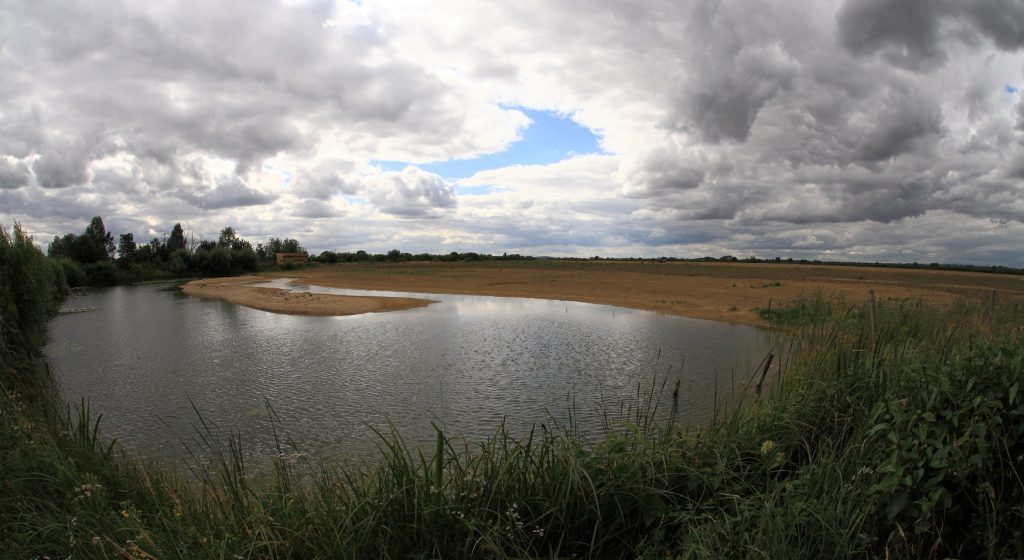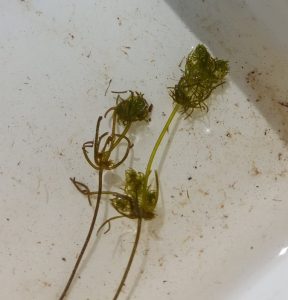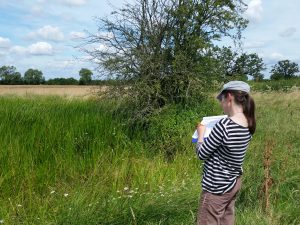Flagship Focus: Gallows Bridge Farm 2017
31st August 2017
The Flagship Pond project is providing a unique opportunity to trial new ways of helping some of the most threatened pond and wetland species. At Gallows Bridge Farm in Buckinghamshire we’ve been working with site owners, Berkshire, Buckinghamshire and Oxfordshire Wildlife Trust (BBOWT) to protect one of the rarest wetland plants in the county.

Gallows Bridge Farm is part of the much larger Upper Ray Meadows complex and lies within the join BBOWT and RSPB Ray Valley Restoration project area. The Upper Ray catchment is well-known regionally as a stronghold for wading birds with iconic species like Curlew and Lapwing using the Upper Ray’s extensive network of species rich grassland, floodplain and wetlands. Gallows Bridge Farm is also home to a series of traditional farm ponds which support many priority species including Common Toad, Great Crested Newt and Tubular Water-dropwort.
In 2009, BBOWT and Freshwater Habitats Trust dramatically increased the number of ponds on the site by creating

a complex of over 40 shallow ponds within a semi-improved field as part of the Million Ponds Project. This extensive pond creation project is currently being monitored through a PhD with Sheffield University, looking at the process of natural colonisation of new ponds by plants, invertebrates and amphibians. The aim was that, in future, these pools might be used to support the translocation of rare and declining mud plants that require the type of grazing and management in place at Gallows Bridge Farm to maintain their populations. This includes the endangered Tassel Stonewort Tolypella intricata – a species with a significant link to the Upper Ray and the Oxford area.
Stoneworts, or Charophytes, are technically classified as algae, primitive aquatic plants that historically have often been overlooked by botanists; perhaps perceived as tricky to identify – or just too plain to bother with. They are in fact wonderful, ancient species, indicative of high quality unpolluted wetlands. They are amongst the first plants to colonise recently created (or recently managed) ponds and ditches, thriving on the bare substrate free of competition from other plants. If nutrient levels are too high then more vigorous species soon take over and the stoneworts are lost.

The ideal management for ponds to maintain stoneworts is to have the disturbance of livestock poaching the margins of ponds creating a continual turn-over of clay, hoof-prints creating the bare, open conditions and grazing keeping competitive plants away. If habitat does become unfavourable, stonewort spores can remain viable, lying dormant buried under soil, for decades. This provides a period of grace if conditions in the pond or ditch become unfavourable.
Oxfordshire is recognised as an Important Stonewort Area (Plantlife, 2004) largely due to the occurrence of Tassel Stonewort, a scarce plant nationally but recorded from a handful of locations around the Otmoor area which is within the River Ray catchment. Natural colonisation of Tassel Stonewort is currently limited by the availability of habitat between suitable sites. In the past livestock being moving between sites may have helped to carried spores to new locations, but in the modern dryer farmed landscape natural re-colonisation is unlikely so intervention is being used as a conservation measure to prevent the species becoming extinct.

Tassel Stonewort was recorded at a field pond near the village of Charlton on Otmoor in the mid 2000’s, since then management of the pond and surrounding land changed. With less livestock poaching the margins of the pond it soon became overgrown and unsuitable for stoneworts, the species disappearing, displaced by more vigorous floating grass. With permission from the landowner, Freshwater Habitats Trust collected mud from the bottom of the pond, in the location where Tassel stonewort had once been thriving. This mud, hopefully containing thousands of viable spores, was placed into specially prepared ponds at Gallows Bridge Farm. In February BBOWT volunteers kindly helped by opening up the margins of ponds, mimicking the trampling action of cattle and clearing away rushes and grass to create the open conditions the plant favours.

At this point, we simply don’t know if this work will be successful – to our knowledge no one has attempted a spore translocation of stoneworts in this way before. Documenting this sort of experimental work is critical, both to explain what works (and what doesn’t), and to make sure this site is now known as an introduction to prevent confusion if the species is recorded there in the future. Tassel Stonewort germinates during winter months and is visible in ponds during spring, we’ll be keeping a very close look at the ponds on Gallows Bridge Farm in the coming years to monitor success.
We are grateful to Heritage Lottery Fund for the funding which has made this conservation work possible, and to BBOWT staff and volunteers for their help and enthusiasm.
Keep up to date with the People, Ponds and Water project in the area by following Pete Case @peterbcase on Twitter
